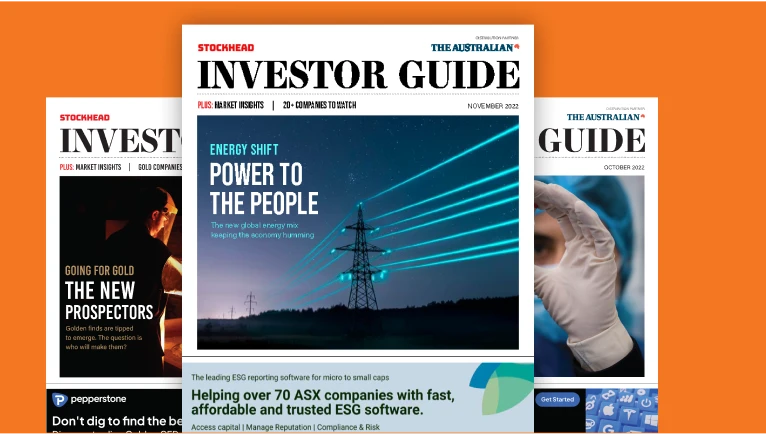Biocurious: Buoyed by capital raisings, biotechs storm home with a wet sail

After battling stormy seas for much of the year, ASX biotechs are navigating calmer waters. Pic: Getty Images.
- Investors are stumping up cash for life sciences capital raisings – but the stories need to be well presented
- After an “incredibly tumultuous” nine months, fundraisings are on track to meet last year’s bumper tally of $2.9 billion
- Two medtech plays are undertaking IPOs in view of listing by the end of the year
Orthocell (ASX:OCC) CEO Paul Anderson bears testament to investors’ renewed – but discerning – appetite for ASX life science plays with well-presented stories.
In the case of the nerve regeneration house, Orthocell last month raised $30 million in a placement, having targeted only $25 million.
“It has been easier because sentiment for IPOs and capital raises has loosened in Australia in the first half of this financial year,” he says.
“But our story is more mature and steadier than it has been.”
Orthocell is commercialising its approved nerve repair tool, Remplir, in the US.
Anderson says the offer attracted more than 50 fund managers and high-net-worth individuals, including from the US, the UK and Hong Kong.
He highlights the interest from US investors, who tend to do more due diligence than their local counterparts.
“It’s a great fillip for us,” Anderson says. “This sees us really well placed to execute in the US market.”
Shaking off the torpor
Shrugging off difficult funding conditions, the ASX biotech sector is storming to the 2025 finish line with a wet sail after a slew of strong secondary capital raisings.
The IPO market has also emerged from its torpor, with at least two big-ticket listings scheduled for before the calendar ticks over.
However, the climate remains far more subdued than the pandemic-era climate, when all it took was the floral scent of sanitiser to excite investors.
Companies need to be able to demonstrate a path to commercialisation.
It helps if they dwell in ‘sexy’ sectors such as radiotherapeutics, wound management and heart devices.
Fresh from the US Food & Drug Administration (FDA) approving its stem cell treatment for paediatric graft-versus-host disease, Mesoblast (ASX:MSB) in January raised a bumper US$160 million ($260 million).
This was by way of a global private placement, mainly to existing US and UK holders.
In July, Clarity Pharmaceuticals (ASX:CU6) corralled $203 million in a placement, from a “small group of institutional investors close to the company”.
Riding the “lumps and the bumps”
Radiopharm Theranostics (ASX:RAD) raised $40 million in a placement and share purchase plan (SPP).
Heart device play EBR Systems (ASX:EBR) gathered an impressive $75.9 million in a placement and SPP.
Other heart-y raisings in the ticker health realm were Artrya (ASX:AYA) ($80 million) and Anteris Technologies (ASX:AVR) (up to US$38.5 million).
Cannabis grower Cann Group (ASX:CAN) raised $9 million, as part of a restructure that saw the National Australia Bank forgive $58 million of debt.
Immuno-oncology drug developer Imugene (ASX:IMU) raised $37 million, while sleep/depression innovator TrivarX (ASX:TRI) rounded up $4.2 million in a placement.
According to Biotech Daily, the sector is on track to match the record $2.9 billion of equity raisings in 2024, compared with around $2.2 billion in 2023 and $1.6 billion in 2022.
“Despite all the doom and gloom, the sky is apparently not falling, after all,” says editor David Langsam.
“With all its lumps and bumps, 2025 has been another good year for Australian biotechnology companies raising cash.”
Clarity takes the blitzkrieg approach
At the time of his company’s chunky whip-’round, Clarity Pharmaceuticals executive chairman Dr Alan Taylor described an “incredibly tumultuous” period for markets over the previous eight months.
The culprit, of course, was Donald Trump’s real-world rendition of chaos theory.
During such times, “pre-revenue biotechnology companies can be affected significantly more than other businesses”.
He added that the local sector suffered “unfortunate news” – a reference to Opthea’s failed phase III trial.
Clarity itself was elevated to the ASX200 and ASX300 indices. While cause for celebration, this attracted short sellers.
Despite that, Clarity got the raising away at a 2.2% premium, with “a fast, well-executed and sizeable placement to a small number of institutional investors who are close to the company”.
Fleeing tech for biotech
Radiopharm CEO Ricardo Canevari says his company’s lusty raising reflects improving general sentiment and the company’s recent feed of clinical trial results across its imaging and therapeutic studies.
“I believe it’s a combination of the two,” he says.
“The macro conditions are improving after three and a half to four very bad years.
“Now we see some a return of positivity, probably also supported by some sector rotations.”
For example, investors are drifting from ‘expensive’ techs stocks to biotechs.
“But having clinical data is critical, so it is also company specific.”
Funding more than a dream
Orthocell’s Anderson says sentiment is stronger than when the company last raised funds ($17 million in October 2024).
It helped that Orthocell last month wasn’t raising money for a pipe dream, but for Remplir’s US commercial rollout, which is underway.
“Getting US investors to show interest in the story testifies to the progress we have made there and to the opportunity they see that lies ahead,” Anderson says.
The offer was struck at $1.30 a share, a modest 9% discount.
Still, it’s hard to please everyone.
Anderson says the company copped criticism for not extending the opportunity to retail investors, via an SPP.
He’s not for turning.
“Our objective is to ‘institutionalise’ the register,” he says.
“We are building a world class registry that will support us in the long term.”
Barren IPO pipeline starts to fill
Breaking a prolonged life sciences IPO drought, Tetratherix (ASX:TTX) listed strongly on June 30 after raising $25 million.
Tetratherix has developed novel tools for applications including tissue healing and bone regeneration.
Nexsen’s (ASX:NXN) October 16 debut got off to a rollicking start, with the company raising $8 million for its point of care lateral flow devices.
Intended applications cover the medtech, agritech and biosecurity sectors.
As it happened, this was only the entrée and the market is leaving the best to last.
Over the weekend the backers of Saluda Medical filled a US$150 million ($230 million) raising, in view of listing on December 1.
Founded by former Cochlear (ASX:COH) executive John Parker, Saluda has developed an FDA-approved device to treat conditions such as chronic pain or movement disorders.
On listing, the company will have a circa $700 million market valuation.
Also with Cochlear connections, Epiminder is in the final throes of raising $125 million for its epilepsy monitoring device.
Cochlear reportedly has put in for $10 million in a cornerstone allocation.
Be creative – and don’t wait until the well runs dry
Addressing last month’s AusbiotechInvest conference in Melbourne, Brandon Capital founding partner Dr Chris Nave said biotech capital remained available despite the “difficult” conditions.
But he said it was important for proponents to find “creative” solutions, whilst providing realistic timelines to commercialisation.
“I’ve been investing for 20 years and the truth is good companies always find a way and hopefully the right investment partners will help you find a way.”
He said the local sector had been amenable to backing early-stage companies seeking smaller amounts.
“Our job now is to solve that later stage where you need to raise $100 to 200 million and you shouldn’t have to go public or offshore to do that.”
Avoiding ‘no man’s land’
Patrys (ASX:PAB) CEO Dr James Campbell’s “pet frustration” is that too many biotechs are limited in the amounts of funding they are able to raise.
“Because of this, they end up raising small amounts that do not allow them to meaningfully advance their assets and create value in their company prior to undertaking their next fundraising,” he says.
“As a consequence, they end up in a no-man’s land where they are unable to fully explore and develop the opportunities that their assets may provide.
“Instead, they are locked into spending a lot of their time in an endless circle of small capital raisings just to survive.”
Orthocell’s Anderson recommends not waiting until raising capital is a life-or-death proposition.
Far from Orthocell’s raising being last-gasp Hail Mary, “we wanted to ensure we were bulletproof in [our] endeavour of being successful in the US”.
Clarity’s Taylor says the funding ensures the company can deliver “significant short- and medium-term deliverables”, including pivotal phase III trials.
He admits that amid the term sheets and transacting, the company hasn’t strayed from its ultimate goal of “better treating people with cancer”.
Related Topics

UNLOCK INSIGHTS
Discover the untold stories of emerging ASX stocks.
Daily news and expert analysis, it's free to subscribe.
By proceeding, you confirm you understand that we handle personal information in accordance with our Privacy Policy.








